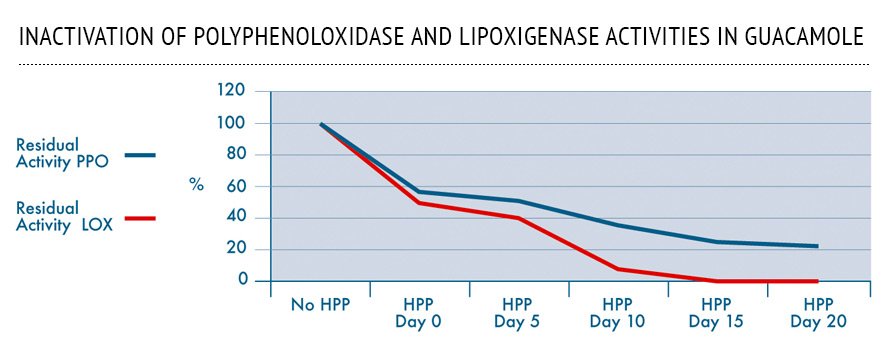Advantages
To meet the demands of the XXI century consumer (convenience foods, higher sensorial and nutritional quality, additive free/natural, functional products, etc.), food companies need to innovate by using the latest non-thermal technologies, and High Pressure Processing is the most relevant one.
Thermal methods, traditionally used in food industry for food preservation, carry disadvantages like vitamin destruction or flavour changes that can be avoided with HPP.
High Pressure Processing Technology (HPP) Main Advantages
- Characteristics of the fresh product are retained, sensorial and nutritional properties remain almost intact: Greater food quality.
- Destroys pathogens (Listeria, Salmonella, Vibrio, Norovirus, etc.): Food safety and exportation.
- Extends product shelf life: Lower returns, improved customer satisfaction.
- Reduces drastically the overall microbiological spoiling flora: Higher quality along shelf life.
- Avoids or reduces the need for food preservatives: Clean label foods (Natural/Additive Free).
- New innovative food propositions. Products that can not be thermally treated can now be High Pressure Processed: Innovation and competitive advantages
- Able to shuck molluscs or extract crustacean meat without boiling: Higher yields, fresh flavour, minimum hand labor...
- Only needs water (which is recycled) and electricity: Environmentally friendly.


Scientific Literature
- Hicks, D. T.; Pivarnik, L. F.; McDermott, R.; Richard, N.; Hoover, D. G. & Kniel, K. E. Consumer awareness and willingness to pay for high-pressure processing of ready-to-eat food. Journal of Food Science Education 2009, 8(2), 32–38
- Heinz, V. & Buckow, R. Food preservation by high pressure. Journal of Consumer Protection and Food Safety 2010, 5(1), 73–81.
- Patterson, M. F. A Review: Microbiology of pressure-treated foods. Journal of Applied Microbiology 2005, 98(6), 1400–1409.

